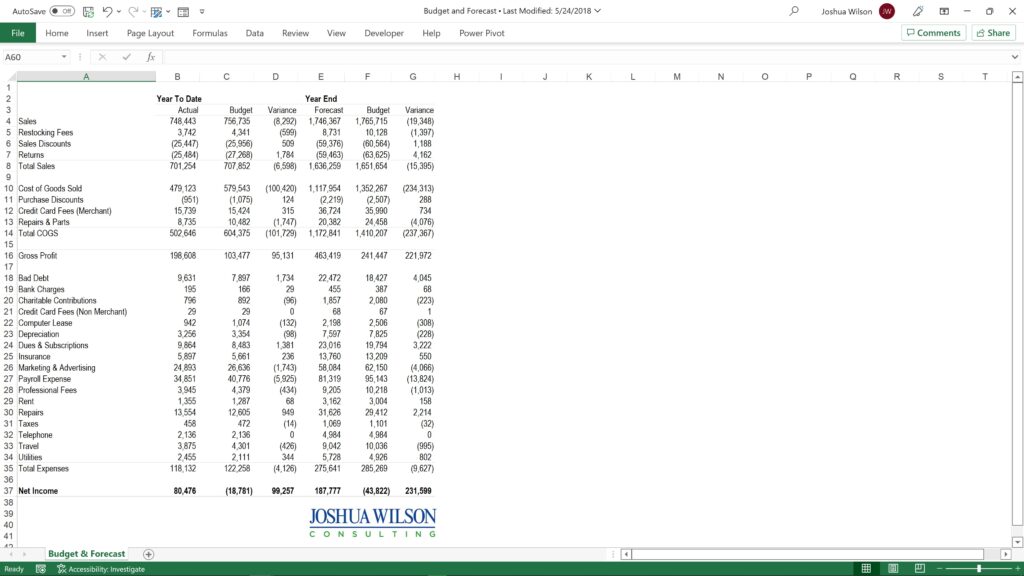Joshua Wilson Consulting provides budgeting and forecasting spreadsheets that review your past profitability, plan future goals and keep you focused on long term financial performance.
Working with me, your budgeting and forecasting process analyzes your revenues and expenses, revisits your assumptions, and can help set performance evaluations, plan future project funding, allocate cash flow, and identify revenue bottlenecks.
You don’t have to spend a lot of time wondering if you’re on track and why. You’ll get clear picture of goals, actual performance, explanations of variances, and up-to-date projections.
Put my budgeting and forecasting services to work for your company today.
Budget, Forecasting, Variance, & Re-Forecasting Project
Situation
CFO Inheriting A Budget Mess
A chief financial officer (CFO) of a school system contacted me. He’d just taken the new CFO job, and found a mess. His eight different schools had eight different budget formats for the prior year budgets. There was no consolidated ‘rolled-up’ total budget, and no way to track the variance of actuals versus budget once the school year rolled around. And there was definitely no methodology to re-forecast the rest of the year based on the latest month’s actuals. Brand new to the job, and with COVID-19 in full force, his attention was demanded many places at once. So he needed someone who could create a standardized budget format, who could convert all eight budgets into the new standard, who could roll up all eight schools to a consolidated budget, and who could give him a mechanism to track actual results v. the budget, identify the variances, and re-project the rest of the year as needed. And he didn’t have time to stop and hold my hand. He needed a budgeting and forecasting expert who could hit the ground running.
Intervention
Creating Standardized Budget Line Items Framework
My first order of business was getting all the budgets to be apples to apples, rather than apples to oranges to pears to bananas to tomatoes… So I created a grid with a column for each budget. In each row, I pasted that budget’s line items. Then I individually cut, pasted, and moved all the budget lines so that there was as much agreement as possible between all of the budgets–the line item names may have differed, but the budget information that belonged on each line was consistent. Some lines were present for only one school or only a few. I left those lines blank for the schools that did not use them. Next, I inserted a column all the way to the left for the ‘master’ name for that line. I chose a master name for each line. This line item name consolidation process gave us a standardized budget framework. At this point, with some clients, it may have been appropriate to send the framework to the client for changes, but this client wanted me to move ahead as quickly as possible.
Creating A Consolidated Budget Framework
Now that we had a name for each budget line item, it was time to create the framework for a consolidated budget. Starting with our standardized budget line items in the leftmost column, I added columns for each of the eight schools, and a total column. Then, cell by cell, I copied the budget data from the eight schools’ budgets to their appropriate cells in our consolidated budge framework. So now we had all eight budgets from last year standardized and consolidated. We were making progress, but needed to make this framework useful for future years’ budgets.
…
Creating Budget Inputs
…
Creating Budget vs Actuals Variance Analysis
…
Creating Reforecasting Mechanism
…
Resolution
Coming later



